Abstract
1 The alleged importance of cardiac β-adrenoceptors for the baroreceptor induced rise in cardiac output after acute vasodilatation was assessed in 41 patients with essential hypertension.
2 Diazoxide (300 mg i.v.) was given, to patients 1) when untreated (n=29), 2) during treatment with propranolol (320 mg/day), (n=15), or 3) during propranolol plus atropine (0.04 mg/kg), (n=12).
3 Diazoxide-induced reductions in arterial pressure during propranolol, either alone (-23±3%) or combined with atropine (-22±3%), were not significantly different from those without pretreatment (-24±3%, mean±s.e. mean.
4 The response of heart rate to diazoxide was somewhat diminished during propranolol (+14±2 with propranolol ν+21±3% without propranolol, 15 paired observations, P < 0.001).
5 Stroke volume rose more in response to diazoxide after pretreatment with propranolol (+16±11 with propranolol ν+2±5% without propranolol, P < 0.001) so that the response of cardiac output was not altered by β-adrenoceptor blockade (+32±4 with propranolol ν+24±9% without propranolol, P > 0.05).
6 The rise in cardiac output was markedly diminished by additional parasympathetic blockade (+14±5% with propranolol plus atropine, n = 12, ν 32±4% with propranolol alone, n = 15, P < 0.01).
7 Increments in plasma noradrenaline were not significantly different in the three situations, indicating that baroreceptor sensitivity was not altered.
8 We conclude that the baroreflex induced rise in cardiac output during vasodilator treatment of hypertension depends on withdrawal of parasympathetic tone rather than sympathetic stimulation.
Full text
PDF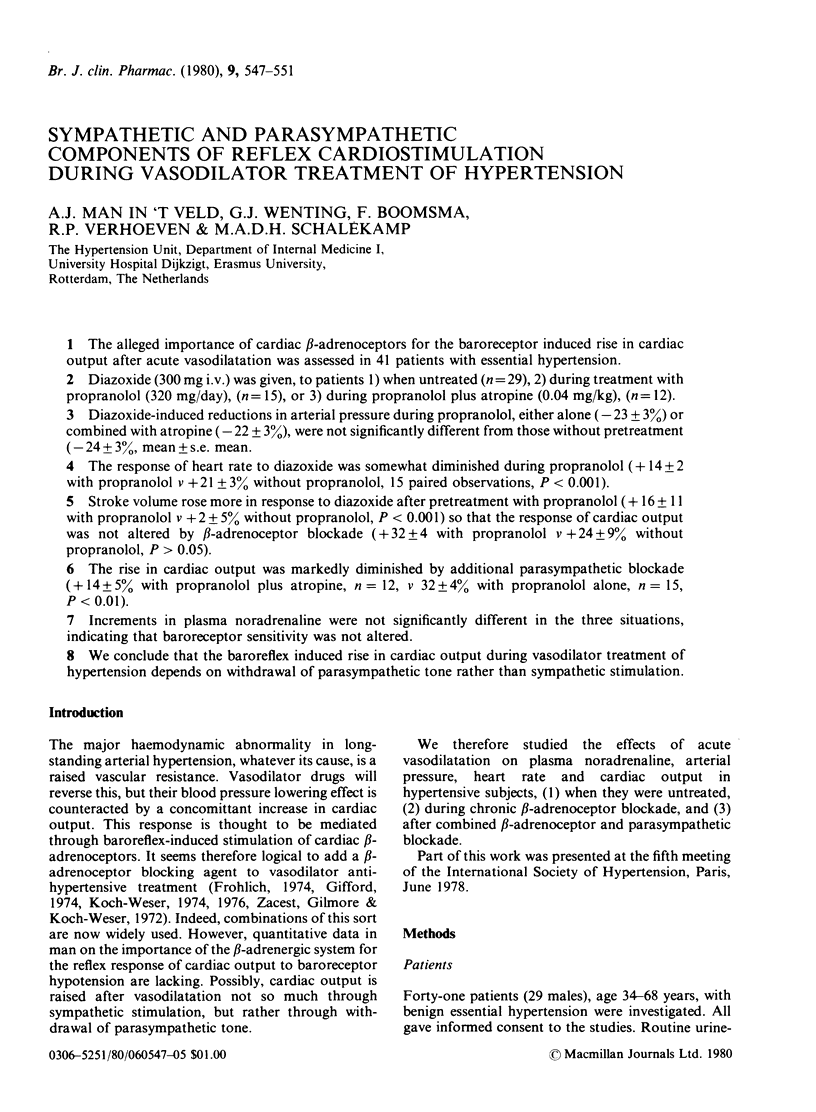
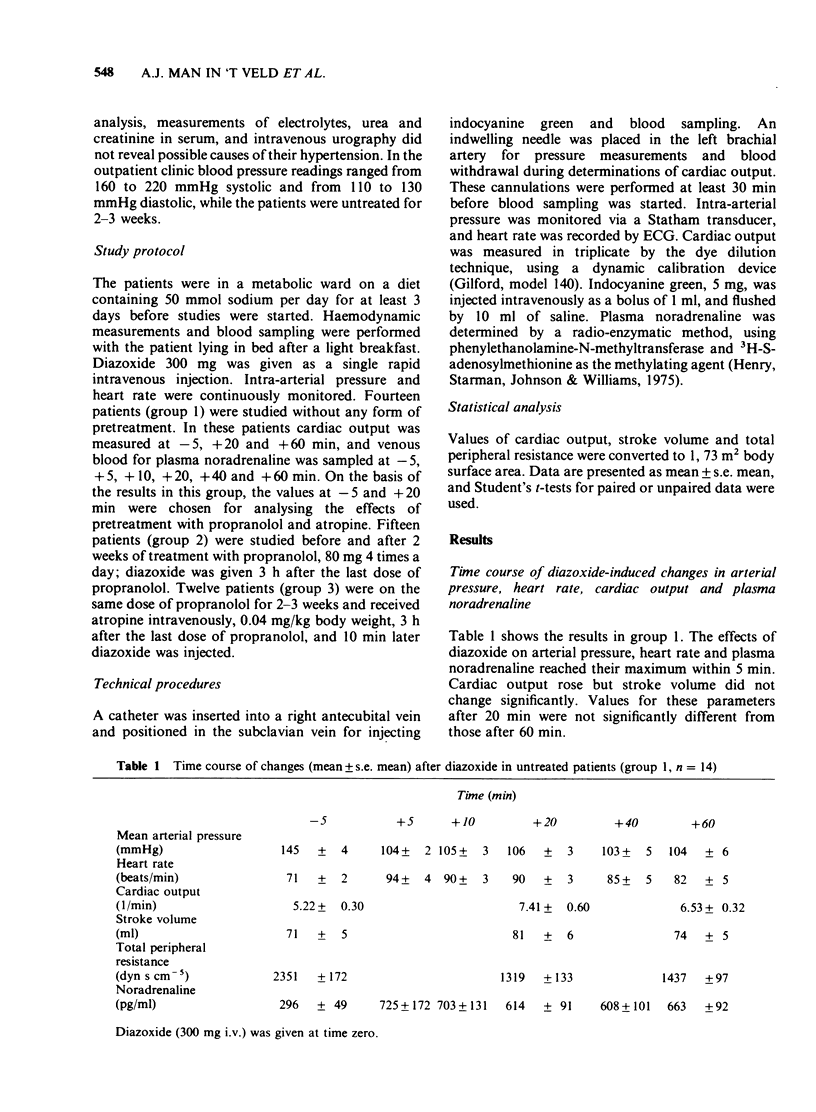
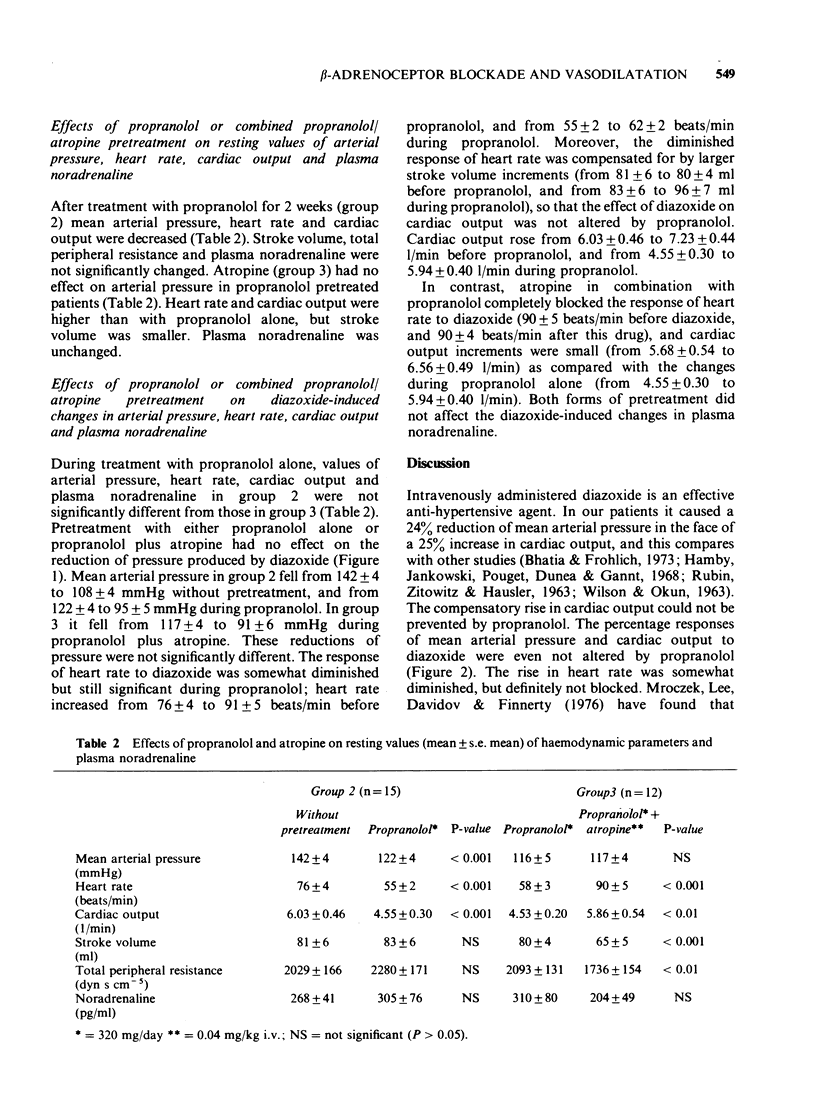
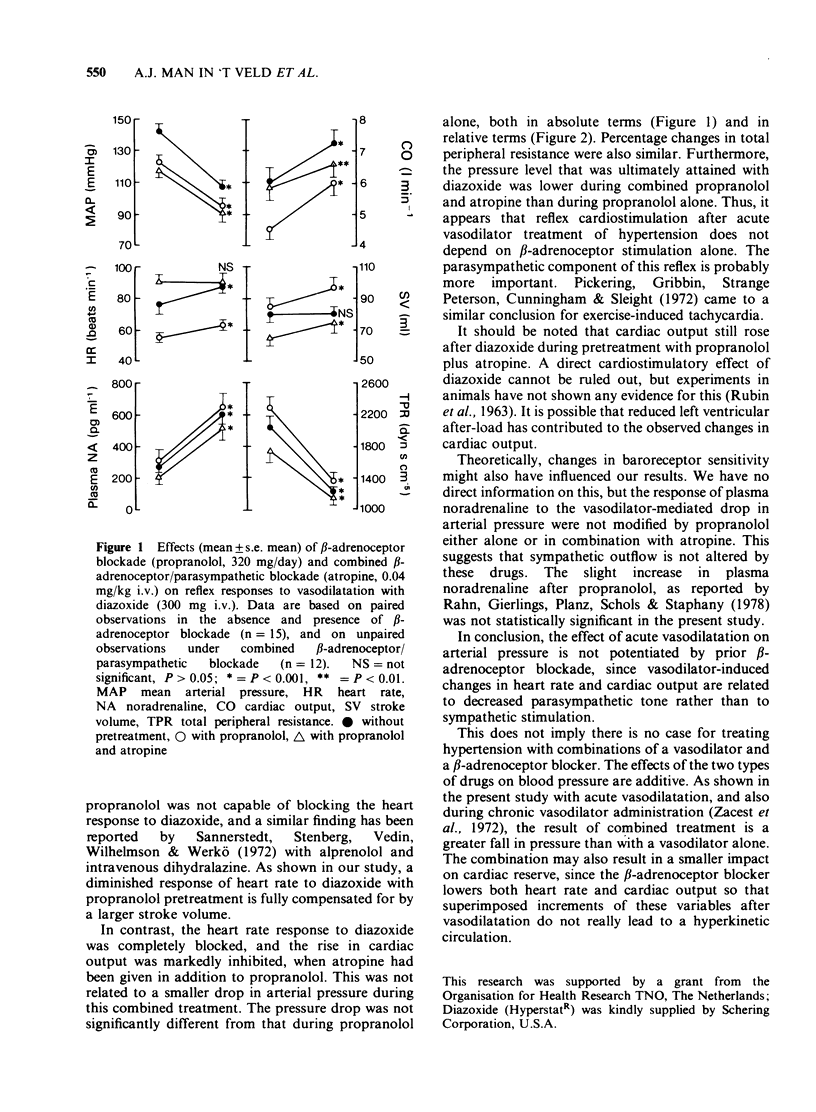
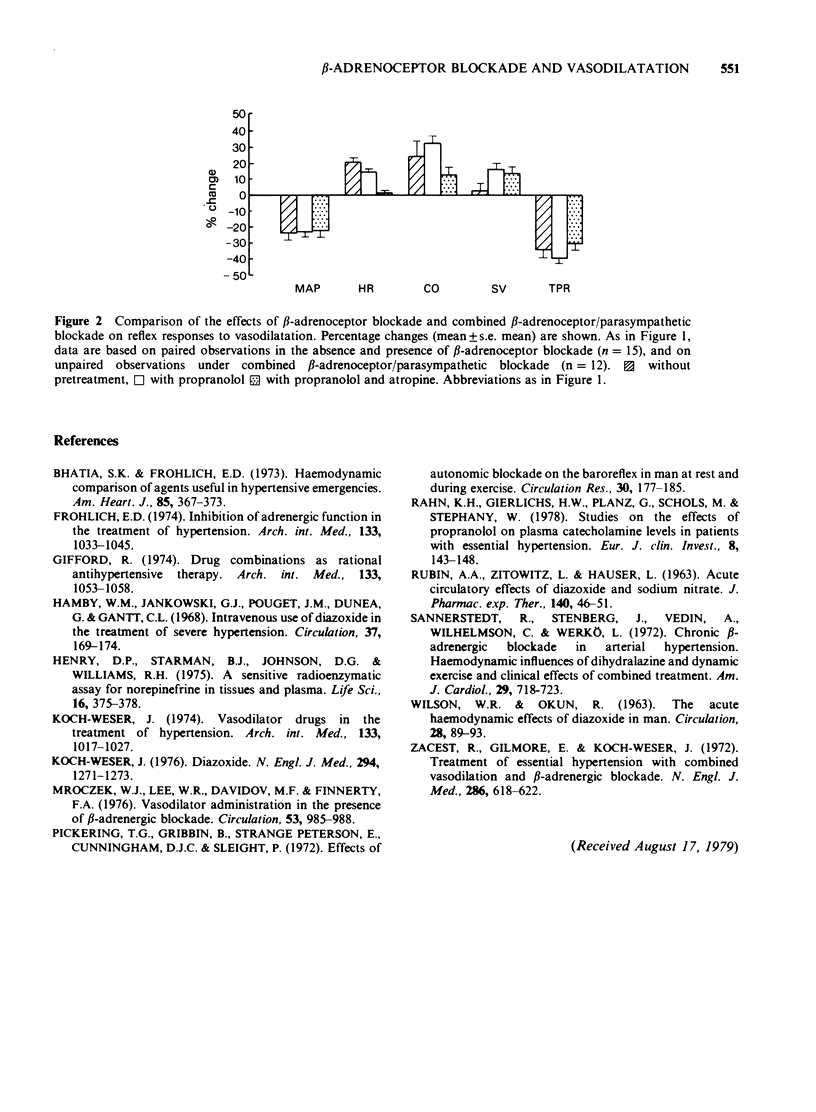
Selected References
These references are in PubMed. This may not be the complete list of references from this article.
- Frohlich E. D. Inhibition of adrenergic function in the treatment of hypertension. Arch Intern Med. 1974 Jun;133(6):1033–1048. [PubMed] [Google Scholar]
- Gifford R. W., Jr Drug combinations as rational antihypertensive therapy. Arch Intern Med. 1974 Jun;133(6):1053–1057. [PubMed] [Google Scholar]
- Henry D. P., Starman B. J., Johnson D. G., Williams R. H. A sensitive radioenzymatic assay for norepinephrine in tissues and plasma. Life Sci. 1975 Feb 1;16(3):375–384. doi: 10.1016/0024-3205(75)90258-1. [DOI] [PubMed] [Google Scholar]
- Koch-Weser J. Diazoxide. N Engl J Med. 1976 Jun 3;294(23):1271–1273. doi: 10.1056/NEJM197606032942306. [DOI] [PubMed] [Google Scholar]
- Koch-Weser J. Vasodilator drugs in the treatment of hypertension. Arch Intern Med. 1974 Jun;133(6):1017–1027. [PubMed] [Google Scholar]
- Mroczek W. J., Lee W. R., Davidov M. E., Finnerty F. A., Jr Vasodilator administration in the presence of beta-adrenergic blockade. Circulation. 1976 Jun;53(6):985–988. doi: 10.1161/01.cir.53.6.985. [DOI] [PubMed] [Google Scholar]
- Pickering T. G., Gribbin B., Petersen E. S., Cunningham D. J., Sleight P. Effects of autonomic blockade on the baroreflex in man at rest and during exercise. Circ Res. 1972 Feb;30(2):177–185. doi: 10.1161/01.res.30.2.177. [DOI] [PubMed] [Google Scholar]
- RUBIN A. A., ZITOWITZ L., HAUSLER L. Acute circulatory effects of diazoxide and sodium nitrite. J Pharmacol Exp Ther. 1963 Apr;140:46–51. [PubMed] [Google Scholar]
- Rahn K. H., Gierlichs H. W., Planz G., Planz R., Schols M., Stephany W. Studies on the effects of propanolol on plasma catecholamine levels in patients with essential hypertension. Eur J Clin Invest. 1978 Jun;8(3):143–148. doi: 10.1111/j.1365-2362.1978.tb00827.x. [DOI] [PubMed] [Google Scholar]
- Sannerstedt R., Stenberg J., Vedin A., Wilhelmsson C., Werkö L. Chronic beta adrenergic blockade in arterial hypertension. Hemodynamic influences of dihydralazine and dynamic exercise and clinical effects of combined treatment. Am J Cardiol. 1972 May;29(5):718–723. doi: 10.1016/0002-9149(72)90176-2. [DOI] [PubMed] [Google Scholar]
- WILSON W. R., OKUN R. The acute hemodynamic effects of diazoxide in man. Circulation. 1963 Jul;28:89–93. doi: 10.1161/01.cir.28.1.89. [DOI] [PubMed] [Google Scholar]
- Zacest R., Gilmore E., Koch-Weser J. Treatment of essential hypertension with combined vasodilation and beta-adrenergic blockade. N Engl J Med. 1972 Mar 23;286(12):617–622. doi: 10.1056/NEJM197203232861201. [DOI] [PubMed] [Google Scholar]


